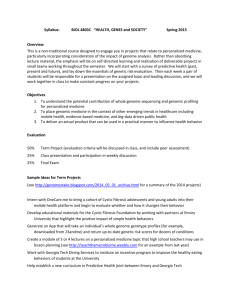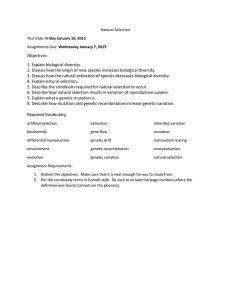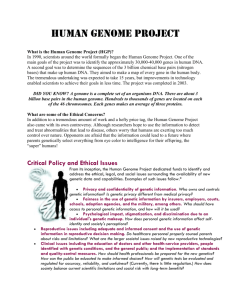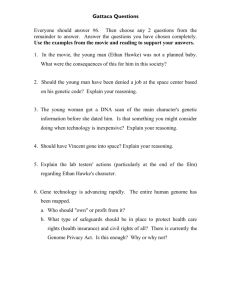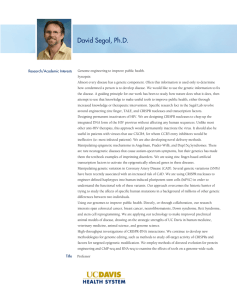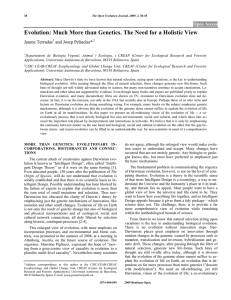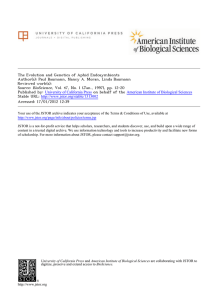For exam: bacterial genomics, insect endosymbiosis, nitrogen cycle, plant symbionts
advertisement
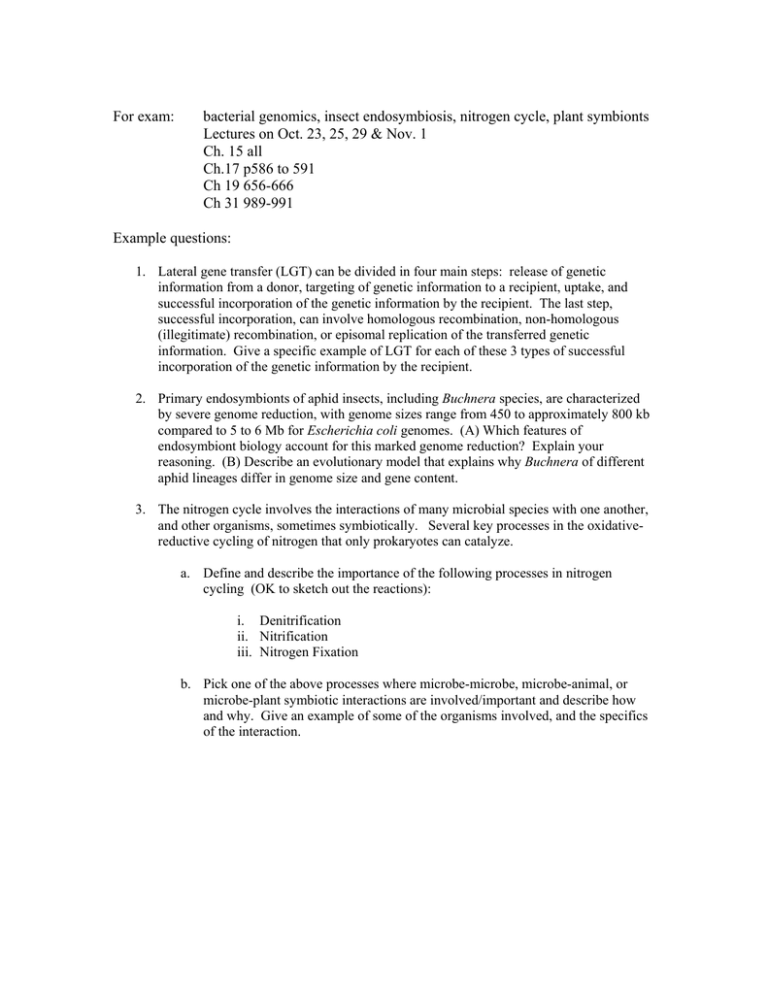
For exam: bacterial genomics, insect endosymbiosis, nitrogen cycle, plant symbionts Lectures on Oct. 23, 25, 29 & Nov. 1 Ch. 15 all Ch.17 p586 to 591 Ch 19 656-666 Ch 31 989-991 Example questions: 1. Lateral gene transfer (LGT) can be divided in four main steps: release of genetic information from a donor, targeting of genetic information to a recipient, uptake, and successful incorporation of the genetic information by the recipient. The last step, successful incorporation, can involve homologous recombination, non-homologous (illegitimate) recombination, or episomal replication of the transferred genetic information. Give a specific example of LGT for each of these 3 types of successful incorporation of the genetic information by the recipient. 2. Primary endosymbionts of aphid insects, including Buchnera species, are characterized by severe genome reduction, with genome sizes range from 450 to approximately 800 kb compared to 5 to 6 Mb for Escherichia coli genomes. (A) Which features of endosymbiont biology account for this marked genome reduction? Explain your reasoning. (B) Describe an evolutionary model that explains why Buchnera of different aphid lineages differ in genome size and gene content. 3. The nitrogen cycle involves the interactions of many microbial species with one another, and other organisms, sometimes symbiotically. Several key processes in the oxidativereductive cycling of nitrogen that only prokaryotes can catalyze. a. Define and describe the importance of the following processes in nitrogen cycling (OK to sketch out the reactions): i. Denitrification ii. Nitrification iii. Nitrogen Fixation b. Pick one of the above processes where microbe-microbe, microbe-animal, or microbe-plant symbiotic interactions are involved/important and describe how and why. Give an example of some of the organisms involved, and the specifics of the interaction.




